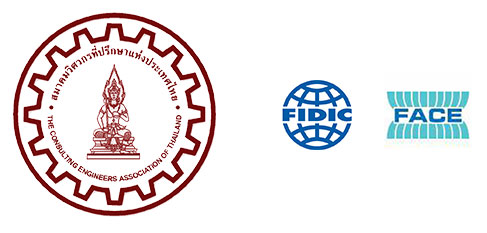Project Name: Detailed Design of Energy Complex
Name of Company: Thai Engineering Consultants Company Limited
Name of Associated Firms / Services Performed / Participation Share:
- Architect 49 Co., Ltd. Architectural Design
- Design Concept Co., Ltd. Architectural and Landscaping Design
- Thai Engineering Consultants Co., Ltd. Structural Design
- Mirt Technical Consultants Co., Ltd. Mechanical & Electrical Systems Design
Location : Phaholyothin Road, Jatujak, Bangkok, Thailand
Client : Energy Complex Company Limited
Project Cost : 6,500 Million Baht
Type of Service : Review of Project’s Feasibility Study, Detailed Design and Preparation of Tender Documents
Project Description :
The project is the development of State Railway of Thailand’s (SRT) land at Phaholyothin Road Km. 11, at the backside of present PTT Public Company Limited Head Office having an area of approximately 28.9 rais to be Energy Business Center where the offices for PTT Exploration and Production Public Co., Ltd., Ministry of Energy and companies in PTT Public Co., Ltd. Group including other companies involved in energy business are to be located.
The Energy Complex Project is a project that gives utmost important in energy savings and conservation, a development of sustainable buildings to have least impact to the environment and to have maximum security in all aspects, worth in investment, maintenance and operation costs. There is no building of this type previously built in Thailand and this project is the first energy-saving buildings in the country.

The project consists of 6 buildings as follows:
1. Building A : PTT Group of Companies Office Building, 36-storey building with total floor area of 118,000 sq. m.
2. Building B : Ministry of Energy Office Building, 24-storey building with total floor area of 62,400 sq. m.
3. Building C : Multi-purpose Building, 8-storey building with total floor area of 19,400 sq. m.
4. Building D : Car Park Building, 10-storey with 2 levels basement, total floor area of 60,000 sq. m.
5. Building E : Car Park Building, 10-storey with 2 levels basement, total floor area of 39,000 sq. m.
6. Building F : Congeneration Plant
Energy and Environment conservation was the main objective of the design for group of buildings in Energy Complex. The innovation concept is to create a model of energy conservation to have utmost benefits from energy savings of the project with effective energy consumption, technology that suits the budget, and that energy savings synchronize with the working environment giving convenience to the staff.
The group of buildings was design based on the following design standards to realize the energy/environment conservation and utmost security concepts.
1. The LEED Green Building Rating System Standard with design factors as follows:
- Sustainable Sites
- Water Efficiency
- Energy and Atmosphere
- Materials and Resources
- Indoor Environment Quality
- Innovation and Design Process
2. ASHRAE 90.1 Energy Efficient Design of New Buildings Except Low-Rise Residential Building for energy/environment conservation
3. NFPA 5000 Building Construction and Safety Code for Fire Safety Design
4. For security design, the group of buildings was designed to have CCTV System, Access Control, Metal Detector and X-Ray at the entrance of each building.
Double Facade walls were used in Building A & B having 1 meter gap in between glass walls and installed shading device to block the direct sunlight when needed as well as bringing exhaust air from air-to-air heat exchanger distributed into the gap in between the glass wall in order to reduce the heat coming into the ventilated area.
The double facade wall system consist of the outer wall which is made of reflective glass wall to provide light passing through the building and filter the some heat, air gap of about 1meter that filtrate heat passing from the outer wall, and the inner wall which is LOWE glass wall.
The use of Photovoltaic (Solar Cell) to produce electricity from the direct sunlight is introduced in this project. The solar cells are installed in the roof top of buildings A, B, D and E together with the monitoring system to monitor the production rate of the system.
The building structure was designed based on Thai and international standards and also designed to resist earthquake at appropriate level.


